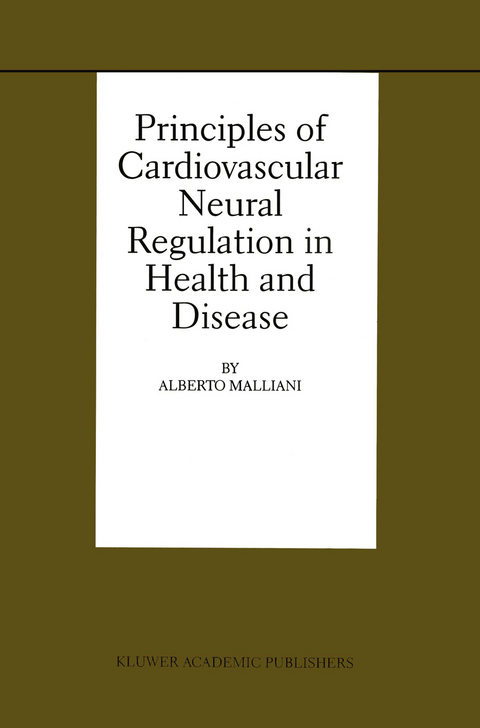
Principles of Cardiovascular Neural Regulation in Health and Disease
Springer-Verlag New York Inc.
978-1-4613-6971-4 (ISBN)
The complexity of cardiovascular neural regulation, reflected by the state of sympathovagal balance, is also assessed in the frequency domain. Power spectrum analysis of heart rate and arterial pressure variability, a sophisticated but simply explained approach, provides an unprecedented tool to evaluate this interaction in both physiological and pathophysiological conditions. The elementary characteristics of nonlinear dynamics are also outlined. Finally, the need for an ethical structure for science and medicine is analyzed.
1 General Concepts and Hypotheses in the Study of Cardiovascular Neural Regulation.- The Negative Feedback.- The Central Neural Mechanisms.- The Cardiovascular Sympathetic Afferent Fibers.- The Positive Feedback.- The Continuous Interaction of Opposing Mechanisms.- Conclusions.- 2 Pathophysiological Mechanisms and the Loss of a Finalistic Purpose.- Ischemic Heart Disease.- Arterial Hypertension.- Congestive Heart Failure.- Cardiac Pain.- Pharmacological Considerations.- 3 The Sympathovagal Balance Explored in the Frequency Domain.- The sympathovagal balance.- Neural and cardiovascular rhythms as markers of functional states.- Computer analysis of cardiovascular signal variability.- Human studies.- Animal studies.- Pharmacological blockades and neural lesions.- Modeling approaches.- The genesis of rhythms.- Solving the puzzle.- 4 Pathophysiological Alterations of Sympathovagal Balance.- Requirements for a tool.- Comparisons among tools.- Human pathophysiological studies.- Prognostic indices.- Acute myocardial infarction.- Patients after myocardial infarction.- Transient myocardial ischemia.- Patients at risk of malignant arrhythmias.- Clinical considerations.- Pure autonomic failure.- Chronic orthostatic intolerance.- 5 Variability and Nonlinear Dynamics.- Definition of nonlinear dynamics.- Experimental studies.- Frequency tracking locus.- Definition of regularity.- Definition of synchronization.- Definition of coordination.- Patterns and symbols.- Chance.- 6 The Necessary Apical Principle in Science and Medicine.- Transparency.- The ethical needs.- The structure of medicine.- The lost art of healing.- Reciprocal education.- The final goal of medicine.- The role of physicians.- The way out.- Appendix for the general reader.- References.
| Reihe/Serie | Basic Science for the Cardiologist ; 6 |
|---|---|
| Zusatzinfo | XVII, 222 p. |
| Verlagsort | New York, NY |
| Sprache | englisch |
| Maße | 155 x 235 mm |
| Themenwelt | Medizinische Fachgebiete ► Innere Medizin ► Kardiologie / Angiologie |
| Medizin / Pharmazie ► Medizinische Fachgebiete ► Neurologie | |
| Studium ► 1. Studienabschnitt (Vorklinik) ► Physiologie | |
| ISBN-10 | 1-4613-6971-1 / 1461369711 |
| ISBN-13 | 978-1-4613-6971-4 / 9781461369714 |
| Zustand | Neuware |
| Haben Sie eine Frage zum Produkt? |
aus dem Bereich


